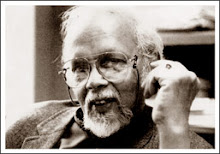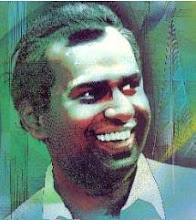Date:22/10/2010
Source: Divaina
 |  මර්සි යොවුන් වියේදි |
දශක හතරකට ආසන්න වූ ඇගේ කලා දිවිය තුළ ගුවන් විදුලිය, වේදිකාව, පුංචි තිරය සහ සිනමාව සිය පරිපූර්ණ වූ කලා කෞෂල්යයන්ගෙන් වර්ණවත් කරමින්, හාස්ය උත්පාදනය ඔස්සේ ප්රේක්ෂක හදවතට දැනෙන අර්ථකතනයන් ඉදිරිපත් කළ, ප්රවීණ හා ජනප්රිය කලා ශිල්පිනී, කලාභූෂණ, දෝන් මර්සි මාලනී එදිරිසිංහ නැතහොත් අපි කවුරුත් හොඳින් හඳුනන මර්සි එදිරිසිංහ ගැන තවත් අටුවාටීකා හෝ ටිප්පනි නොලිය යුතුව ඇතැයි මම සිතමි. ඒ අන් කවරක් නිසා නොව, ඒ තරමටම ඇය කලාකාමී රසික ජනතාවගේ සිත් සතන් තුළ විරාජමානව වැජඹෙන අති දක්ෂ කලා ශිල්පිනියක නිසාය.

රූපවාහිනී මාධ්ය මෙරටට හඳුන්වාදී නොතිබූ යුගයක ගුවන් විදුලිය ඔස්සේ විකාශනය වූ "මුවන්පැළැස්ස", "හන්දියේ ගෙදර", ("මිස් ඩු ලිට්ල්") විනෝද සමය" වැනි එදත් එකසේ ජනප්රිය කලා නිර්මාණයන්ට දායක වෙමින්, කලාව සැබෑවටම තම ජීවිතය කොට ගත් ඇය වසර15 කට පසු එදා අප දුටු "දෙව්ලෝ දෝණි" වේදිකා නාට්ය නව නිෂ්පාදනයක් ලෙස අප හමුවට ගෙන එයි. ඒ පිළිබඳ පේක්ෂකයන් දැනුවත් කිරීම උදෙසා, අප කාර්යාලයට පැමිණි ඇය "සිනමා කලා" සංස්කාරකතුමන් වන නාරද නිශ්ශංක මහතා මුණගැසී පැවැත් වූ සුහද සහ ලෙංගතු කතා බහකින් අනතුරුව සිය කලා දිවියේ රස මුසු අතීතයත්, වර්තමානයත්, පිළිබඳව පැවැසීමට අප සමග දොඩමළු වූවාය. මේ එහිදී අප නැඟූ ප්රශ්නවලට ඇය ලබාදුන් පිළිතුරුයි.
ඔබ කලා දිවිය අරඹන්නේ සය හැවිරිදි වියේදී, ඒ සිදුවීමත් ඔබේ පාසල් සමය පිළිබඳ අතීතයටත් ගියොත්...?
වරකාපොල, අඹේපුස්ස ඉස්සංපිටුවැල්ල නම් වූ වත්තේ නිවසකදී මා උපත ලැබුවා. මගේ පළමු පාසල කෑගල්ල ශාන්ත ජෝශප් බාලිකා විද්යාලයයි. කැලණියේ පමුණුවිල ශාන්ත ජෝශප් විද්යාලෙයෙනුත් එතැනින් රඹුක්කන පරාක්රම විදුහලෙනුත් මා අධ්යාපනය ලැබුවා. ඔබ කියූ පරිදිම මා සය හැවිරිදි ළදැරියකව සිටි අවධියේ "මරියා ගොරෙත්ති" නම් කතෝලික නාට්යයට සම්බන්ධ වුණා. මා 14 හැවිරිදි වියේදී තරුණ ක්රිස්තියානු ශිෂ්ය සංවිධානය වෙනුවෙන් ගරු අර්නස්ට් පොරුතොට පියතුමාගේ උපදෙස් මත දෙහියගහ මීසම නිෂ්පාදනය කළ " ඇල් දියෙන් මිදිරසට" නම් නාට්යයේ රඟපෑවා. ඊට අමතරව ගායිකාවක වීමේ ආශාවකුත් තිබුණා. 1964 දී එවකට පැවැති එකම ගුවන්විදුලිය වූ ශ්රී ලංකා ගුවන් විදුලියේ ජනප්රිය වැඩසටහනක් වූ "නවක මඩල" සංගීත මණ්ඩපයට එක් වන්නේ ඒ හරහායි.
එකල සෞඛ්ය වෛද්ය නිලධාරියකු ලෙස සේවය කළ වැලිකල රත්නයන් ඔහුගේ නාට්ය නිර්මාණයක් වෙනුවෙන් නිළියක සොයමින් සිටියා. කලා ක්ෂේත්රයේ බොහෝ දේ ඔහු විචාළේ අර්නස්ට් පෝරුතොට පියතුමාගෙන්. එතුමාගේ ඒකායන පිළිතුර වූයේ මේ සඳහා සුදුස්සිය මා බවයි. ඒ අනුව 1966 දී වැලිකල රත්නයන් නිපැයූ "උගුරට හොරා බෙහෙත්" නාටකයෙන් මා ප්රසිද්ධ වේදිකාවට ප්රවිෂ්ඨය ලබා ගත්තා. මේ කාලයේදීම ස්වදේශීය සේවය සඳහා ගුවන් විදුලි නාට්ය කටහඬ පරීක්ෂණයකට ඉදිරිපත්වු මා ඉන් පහසුවෙන්ම සමත් වුණා. එකල සිටි ප්රවීණ ගුවන් විදුලි නාට්ය නිර්මාණකරුවන් වූ පී වැලිකළ, සුගතපාලද සිල්වා, සුනන්ද මහේන්ද්ර වැන්නවුන්ගේ නාට්ය සඳහා දායක වීමට මට වාසනාව ලැබුණා.
ඒ සමයේ දී ඔබ ගුවන්විදුලියේ කිසියම් වූ "වාර්තාවක්" පිහිටුවූවා. ඒ පිළිබඳ අද පැවසිය හැක්කේ කුමක්ද..?
සැබැවින්ම, සතියේ දින පහ පුරාවට විකාශය වූ ගුවන් විදුලි නාටක පහකට දායක වීමේ දුර්ලබ අවස්ථාවක් මට උදා වුණා. සඳුදා "මුවන්පැළැස්ස" අඟහරුවාදා "වජිරා", බදාදා " සමනල බද්ද", බ්රහස්පතින්දා "ඇස් දෙක" සහ සිකුරාදා "හන්දියේ ගෙදර" එම ගුවන් විදුලි නාට්යයයි. මේ අතුරින් ආනන්ද සිරිසේන ගේ "හන්දියේ ගෙදර" ගුවන් විදුලි නාටකයේ "මිස් ඩු ලිට්ල්" චරිතය අදටත් අතිශයින්ම ජනප්රියයි.
එදා නිපදවුණු "නිල් කටරොඩු මල්" හි අප්සරාවියකගේ චරිතය ඔබට විශේෂිත වූයේ කුමක් නිසාද....?
1996 දීම "විසිතුරු" නමින් පළවූ පත්රයේ සුගතපාලද සිල්වා මහතා විසින් වේදිකා නාට්ය නිළියන් තොරාගැනීමට දැන්වීමක් පළ කොට තිබුණා. ඉන් පසු දෙහිවල දී පැවැත්වුණු පරීක්ෂණයෙන් අනතුරුව පැමිණි සිටි බොහෝ නිළියන් අභිබවා මුල් තැනට පත්වන්නට මට අවස්ථාව ලැබුණා. "නිල් කටරොඩු මල්" සඳහා එක් වූයේ ඒ හරහායි. එවකට ජනප්රිය රංගන ශිල්පියකු වූ ටෝනි රණසිංහ මහතා සමග මා මෙහි රංගනයෙහි යෙදුණා. ඉන් පසු සුගතපාල මහතාගේම "හරිම බඩු හයක්", "තුරග සන්නිය", "හිත හොඳ අම්මන්ඩි", "දෑවැද්දෝ", "නන්දි විසාල", "දුන්න දුනුගමුවේ", "මුතු කුමාරි", ගුණසේන ගලප්පත්තිගේ "සඳ කිඳුරු", "තාත්තා", "මුහුදු පුත්තු", චන්ද්ර සේන දසනායකයන්ගේ "රංකඳ", පතිරාජ එල්. එස්. දයානන්දගේ "කවුරුත් එන්නේ නෑ", ආර්. ආර්. සමරකෝන්ගේ "ඉඩම", "අහසින් වැටුණු මිනිස්සු", නලින් විඡේසේකරගේ "ටිකිරි ටිකිරි ටිකිරි ලියා", ෆ්රeන්සිස් වන්නිආරච්චි "රෑ රැජිණ දරු සම්පත්", ධර්මදාස ජයවීරගේ "ගහන බෙරේ පළුව නැතේ", රංජිත් රත්නවීරගේ "ගැහැනියක් සහ මරණය", සිරිත් රත්නවීරගේ "සක්වල යට", ඩොනල්ඩ් රත්නවීරයන්ගේ "සිංහ", ජොර්ඡ් සිල්වාගේ "සීලවතී", ලූෂන් බුලත්සිංහලගේ තාරාවෝ ඉගිලෙති", දයාරත්න රටගෙදරගේ "ගරු ලිසී", හේමසිරි ලියනගේ "නරියා සහ කේජු", ඩී. කීරගල ආරච්චිගේ "තහනම් දේශය", නිශාන්ත අල්විස්ගේ "ශීලවති", ඩග්ලස් සිරිවර්ධනගේ "අඹු සැමියෝ", ජී. එස්. ස්ටැන්ලි පෙරේරාගේ "සමුද්ර දේවි" සමගින් වේදිකා නාට්ය 50 කට පමණ රංගනයෙන් එක් වී කලාව වෙනුවෙන් සේවය සැපයුවා. මේ සෑම නාට්ය නිර්මාණයක්ම දර්ශන වාර 300 ක් පමණ රඟ දැක් වූවා.
වේදිකාවේ පෙළහැර පෑ ඔබ, සිනමාවත් ආලෝකවත් කළා. "පළගැටියෝ" චිත්රපටයේ "සෝමා" එයට එක් උදාහරණයක් නොවේ දැයි මා යෝජනා කළොත්....?
සත්තකන්ම, මා ඔබ සමග එකඟයි. එය මගේ මංගල සිනමා රංගන දායකත්වය නොවූවත් මා අදටත් "සෝමාට" කැමතියි. මා ප්රථමයෙන් සිනමාවේ රංගනයට පිවිසියේ වසන්ත ඔබේසේකර අධ්යක්ෂණය කළ "දියමන්ති" චිත්රපටය තුළින්. එහි මා සෝමසිරි දෙණිපිටියගේ බිරිඳ ලෙසින් රංගනයෙහි යෙදුණා. 1975 ධර්මසිරි බණ්ඩාරනායක, හෙන්රි ජයසේන, දම්මි ෆොන්සේකා සමග "පළගැටියෝ" හි රඟපෑවා. ඉන්පසු මිල්ටන් ජයවර්ධනගේ "නුවන් රේණු" සිවදාසයන්ගේ "හොඳින් නැත්තම් නරකින්", තිලක් වේහැල්ලගේ "ඔක්කොම රජවරු", කේ. ඒ. ඩබ්ලිව් පෙරේරාගේ "ධවල පුෂ්පය" සමගින් සිනමා පට 15 කට පමණ මේ වන විට මා රංගන දායකත්වය සපයා තිබෙනවා. මේ සෑම තැනකදීම ලැබුණු ජනතා ප්රසාදය මාගේ කලා දිවිය තවත් දිරිමත් කරන්නක් වුණා.
1983 දී ආරම්භ කළ "විනෝද සමයේ" දී ඔබ හාස්ය රංගනයේ "රජ තුන් කට්ටුව"ට මැදි වූ එකම කාන්තාව වශයෙන් අප අමන්දානන්දයට පත්කළා. මේ සිදුවීම් ගැනත් යමක් පැවසිය හැකිද....?
ඔබ පැවසූ පරිදිම, ඇනස්ලි ඩයස්, සැමුවෙල් රොද්රිගු සහ බර්ටි ගුණතිලක යන මහත්වරුන්ට "රජ තුන්කට්ටුව" යෑයි ඇමතීම සදාතනික වූ සත්යයක්. රංගනයට කුමන මාධ්යක් වුවද දක්ෂයාට තැන පිළිබඳව පැණයක් නොවන බව, මේ තුළින් අපට ප්රේක්ෂකයන්ට එත්තු ගැන්වීමට හැකියාව ලැබුණා. "විනෝද සමය" අදටත් ජනප්රියව පැවතීමේ රහස එයයි.
"සෝමාගේ සිහිනය" ඔබ පුංචි තිරයට කැන්ද වූ මුල්ම අවස්ථාව....?
ඔව්ෘ. ලූෂන් බුලත්සිංහලගේ "සෝමාගේ සිහිනය" සමඟ පුංචි තිරයට ප්රවිෂ්ඨ වූ මා බී. සිරිතුංග පෙරේරාගේ "සාම නදී"" ශාන්ත අල්විස්ගේ "පහන් තරුව", "හාමුදුරුවෝ", බර්ටි නිහාල්ගේ "රාජ භවන", ඇන්ඩෲ ජයමාන්නගේ "සසල රුව", "ගමේ විත්ති" මේ දිනවල විකාශනය වන "අමන්දා" ටෙලි නිර්මාණයත් ඇතුළුව, ටෙලි නාට්ය 25 කට පමණ මාගේ රංගන දායකත්වය සැපයුවා.
ඔබ වේදිකාවට නාට්ය කිහිපයක් නිර්මාණය කළා සේම, විවිධ චරිතයන්ට හඬ කැවීම් සිදු කිරීමත් සිදුකළා. ඒ පිළිබඳවත් පැවසිය යුතු යමක් තිබෙනවාද...?
1986 දී මාගේ පළමු නාට්ය නිර්මාණය වූ "මෝහිණී" වේදිකාවට ගෙන ආවා. 1993 "විශ්ව සුන්දරී" කළා. ඉන් පසු "රංකද", "තාරාවෝ ඉගිලෙති" නාට්ය නව නිෂ්පාදනයන් ලෙස කරලියට කැඳවාගෙන ආවා. ටයිටස් තොටවත්ත මහතාගේ මුණ ගැසීමත් සමග සුරංගනා කතා පෙළ, වලස් මාමා, ඔෂීන් වැනි බොහෝ නිර්මාණයන්ට දායක වුණා. මින් වලස් මාමා හි "වලස් නැන්දා" සහ "බංගලවතී ඉස්කෝලෙ හාමිනේ" වැනි චරිත අදටත් කුඩා දරුවන්ගේ සිත් සතන් තුළ තැන්පත්ව පවතින බව මා දන්නවා.
එදා අප දුටු "දෙව්ලෝ දොaණි" අද නව නිෂ්පාදනයක් ලෙසින් ඔබ රැගෙන එනවා.ෙ මවැනි වෙනසක් කරන්නට සිතුවේ ඇයි....?
වසර 15 කට පසු "දෙව්ලෝ දෝණි" නැවතත් වේදිකාවට රැගෙන එන්නේ බොහෝ පිරිසකගේ ඉල්ලීම මතයි. මා මෙහි රංගනයෙහි යෙදෙනවා සේම නිෂ්පාදනයත් සිදු කරනවා. සමාජය තුළ අද දක්නට ලැබෙන නොයෙක් සිදුවීම්, කාලයට ගැලපෙන ලෙස මුල් නිර්මාණයට වඩා බිඳක් වෙනස් ආකාරයෙන් ගෙන එන්නට මා උත්සාහ කරනවා. මෙය හාස්ය ඔස්සේ ඉදිරිපත් කරන ප්රබල සමාජ පණිවිඩයක්. දිගටම "දෙවිලෝ දෝණි" සමග රැඳී සිටීම මාගේ බලාපොරොත්තුවයි. මෙහි දර්ශන විමසීම සඳහා 0718275098, 0777576277 යන දුරකතන අංක ඇමතිය හැකිය. "දෙව්ලෝ දෝණ්" නව නිර්මාණයේ මංගල දර්ශනය එළැඹෙන 29 වැනිදා (සිකුරාදා) පසුවරු 6.30 ට මරදාන එල්ෆින්ස්ටන් රංග ශාලාවේදී වේදිකා ගතවෙනවා. විඡේරත්න වරකාගොඩ, ප්රසන්න ෆොන්සේකා, ගාමිණී හෙට්ටිආරච්චි, දමයන්ත පෙරේරා, සරත් පීරිස්, අරවින්ද රණසිංහ රංගනයෙන්ද සංගීතය ඔස්ටින් මුණසිංහගෙන්, සංගීතය මෙහෙයවීම, ශාස්ත්රපති කථිකාචාර්ය නිමන්ත හේෂාන්, නිෂ්පාදන කළමණාකරු ඊ. වී. ශ්රියාපාල, වේදිකා පරිපාලනය චින්තක පතිරණ, සහය චමත් ජයතිලක, රෝහිත හත්තටුව, නිමල් සූරිය බණ්ඩාර, ඉන්දු ශිහාන් ද, වේශ නිරූපණය ප්රේමනාත් කපුගෙදර, විදුලි ආලෝකය උපාලි වීරසිංහ( ක්රියේට්ව් ලයිට්ස්) පිටපත රචනය හෙක්ටර් කුමාර සිරි ද" දෙවිලෝ දොaණි" සඳහා දායකත්වය සපයනවා.
කලාවට ඇය සිය ජීවිතයට මෙන් සැලකූ බව මා මුලින් ඔබට කළ සඳහන මතක ඇතැයි සිතමි. මේ.....තරුණියකගේ ජීවිතයේ උතුම් දිනයක් ලෙස සැලකෙන "මංගල දිනයේදී" මර්සි එදිරිසිංහ නම් වූ අප කතා නායිකාව කළ කැප කිරීමක් පිළිබඳ තවත් එක් සිද්ධියක් පමණී.
ඔහු, මාගේ ජීවිතය පුරා ශක්තියක්ව සිටියා. අප ආදරය කළා. විවාහ වුණා. ඔහු ලලිත් කොතලාවල. මේ සිද්ධිය වුණේ මා ඔහුගේ අතගත් දිනයේ. එදා... හැව්ලොක් ටවුමේ ලුම්බිණි රඟහලේ "මුතු කුමාරි" ප්රදර්ශනය වූ දිනය. කෙහොම වුණත්, විවාහයෙන් පසු "මධු සමය" ගත කිරීමට පිටත් වූ අප රැගත් රථයට ලුම්බිණි රඟහල පසුකොට යන්නට මා ඉඩ දුන්නේ නැහැ. මගේ සැමියා රිය තුළ සිටියදී ඉන් බැසගත් මා රඟහලට ගොස් "මුතු කුමාරි" නාට්යයේ රංගනයට එක්වුණා. මාගේ පැමිණීමට ප්රේක්ෂකයන් අත්පොළසන් ලබාදුන්නත් මංගල රියෙහි තනි වී සිටි සැමියා ගැන මට ඇති වූයේ කණගාටුවක්. ඒත්... මේ කැපකිරීම කලාවේ නාමයෙන් මා කළ පරිත්යාගයක් ලෙස සිතා අදටත් සතුටු විය හැකියි.
ඇය කලාව නිසා උපයාගත් මුදල් සම්භාරයක් නැතත්, යහ ගුණ පිරි මිනිසුන් නිතිපතා සොයා ගත් බවත්, ඔවුන් වෙනුවෙන් ඇරැඹූ "මර්සි එදිරිසිංහ රසික නිවහන ශ්රී ලංකා" එයට උදාහරණ සපයන බවත් ඇය අප හා පැවසුවාය. රසිකයන් 200 දෙනකුගෙන් පමණ සැදුම්ලත් මේ නිවහනේ ආරම්භක රසිකයා හිටපු අග්රමාත්ය රත්නසිරි වික්රමනායක මහතා බවත්, දෙවැන්නා එජාප නියෝජ්ය නායක කරු ජයසූරිය මහතා බවත් ඇය සිහිපත් කළා.
ගුවන් විදුලියේ, වේදිකාවේ, පුංචි තිරයේ සහ සිනමාවේ සිය දායකත්වයන් සැපයූ ඈ, ලලිත කලාවන්ට පැමිණියේ ගායන ශිල්පිණියක වීමේ අභිප්රායද ඇතිවය. එයද අද ඵලදරා ඇත. ඇගේ මංගල ගීත සමුච්ඡය ඔබ දෝතට පත්වන්නේ ඒ හරහාය. ගායනය හා හඬ පාලනය ඇයට ඉගැන්වූයේ විශාරද නන්දා මාලනීය. එයද ඇය කෘතවේදීව සිහිපත් කරයි. ඇගේ අභිමතාර්ථය ඔබට කෙසේ ගෝචර වන්නේ දැයි අනාගතයට භාර කළ යුත්තකි. එය අනාගතයට භාරකොට අප බලා සිටින්නේ ඇගේ මීළඟ ප්රයාමය කුමක්ද යන්න දැන ගැනීම සඳහාය. ."ලලිත කලාවන් තුළ ගිමන් හල් නොමැති බව" ඇය අපට පසක් කොට ඇත. අපි ඇගේ නිර්මාණයන් දෙස නෙත් යොමා සිටිමු. දෙසවන් යොමු කරමු. හාස්ය ඔස්සේ අපට ලබාදෙන ගැඹුරු වූත්, අර්ථවත් වූත්, පණිවිඩය ධාරණය කරගනිමු. මර්සි එදිරිසිංහ නම් වූ ප්රවීණ කලා ශිල්පිණියට නිදුක් නීරෝගී සුවයත්, චිරං ජීවනයත් ප්රාර්ථනා කරමු.
සංවාද සටහන - සුජීව තත්සර
ඡායාරූප පිටපත්කිරීම - වාසල සේනාරත්න




 Centerstage Productions presents the critically acclaimed comedy Bengal Bungalow at the Lionel Wendt this September which promises audiences a side splitting comedic theatre experience.
Centerstage Productions presents the critically acclaimed comedy Bengal Bungalow at the Lionel Wendt this September which promises audiences a side splitting comedic theatre experience.




































